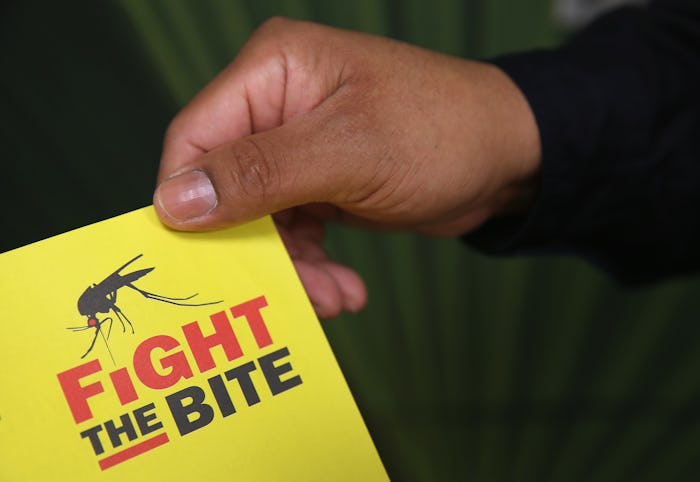Life

How To Identify A Zika-Carrying Mosquito From The Swarms In Your Backyard
The Zika virus outbreak that has been devestating Central and South America for months is now threatening to hit the United States. Zika infection is particularly dangerous to pregnant women who may pass it onto their fetus causing miscarriage or a severe birth defect known as microcephaly. The virus is transmitted either through sexual contact with an infected individual or, more often, by mosquitos, specifically the Aedes aegypti species. With summer around the corner and mosquito populations rising, you may want to find out how to identify a zika-carrying mosquito and how to recognize the differences between aegypti and other annoying but safer species.
The stakes for avoiding pesky mosquito bites are decidedly higher this year as the Zika outbreak rages on without any signs of stopping. Zika is expected to start infecting populations in the United States, especially the Gulf Coast, in the coming weeks as temperatures rise. Luckily, the virus is carried by only one specific species of mosquito called the Aedes aegypti. It is easy for scientists to track this type of mosquito and, in doing so, track Zika.
What do these annoying little bugs look like and how do you stop them from biting you? The Aedes agypti mosquito loves warm weather. It is most often found in tropical climates but, according to The Wall Street Journal, it has a possible range as far north as San Franciscio and New York City.
With the naked and untrained eye, it can be nigh impossible to distinguish the Aedes aegypti from its mosquito brethren. It has the typical long proboscis, the needle nose-like thing used for sucking blood, that all mosquitos have and it has black legs and thorax with small white stripes.
These buggers can breed practically anywhere there is stagnant water; According to the World Health Organization, they'll even leave eggs in a few drops collected on a crumpled up candy wrapper. Each female can lay up to a thousand eggs in her lifetime. Eggs can survive on dry surfaces for more than a year, waiting until they get wet before they start hatching. The species is remarkably adaptable, making them startlingly resilient and thus an efficient vector for disease and a serious danger to humans.
They thrive in big cities. Aedes aegypti are both opportunistic and tenacious when it comes to biting. Only female mosquitos bite but they can be aggressive. They show a distinct preference for human blood over that of other mammals (awesome, right?). They tend to gather near shaded areas outside. These mosquitoes often use "sneak attacks” to bite humans to protect themselves from getting noticed and swatted at. According to the WHO, the female approaches her victim from behind and bites the ankles or elbows.
While most intense around dawn and dusk, biting can occur at all hours during the day. If caught inside, Aedes aegypti mosquitos will continue to bite humans into the night in a well-lit house, according to the WHO. Speaking of indoors, they love getting caught in your house. They will chill out in your closets, under your bed, and behind appliances until dawn or dusk when the bug will emerge to bite anyone who probably won’t notice they’ve been bit until long after the culprit has disappeared.
The WHO said experts call these female mosquitos “sip feeders,” meaning they take a little sip of blood from different victims instead of drawing a sufficient amount from one individual. This increases the likelihood that a single mosquito will spread the disease to a multitude of people, making them even more worrisome to health professionals.
“All of these features means Aedes aegypti populations extremely difficult to control,” the WHO noted in a statement. “They also make the diseases they spread a much larger menace.”
Instead of working to differentiate the species of mosquitos, the best course of action against Aedes aegypti mosquito bites is to repel all mosquitos. Bite prevention is the same no matter the species: wear long sleeves and pants when you are outside and use a bug repellant, preferably one that contains DEET as those are most effective but you can look for ones with Picaridin, IR3535, or oil of the lemo eucalyptus as well. Avoid leaving your windows or doors open (especially if you don’t have screens) and make sure your home is free of any stagnant water that could prove to be fertile breeding ground for mosquitos.